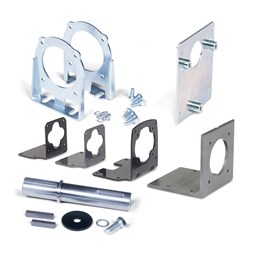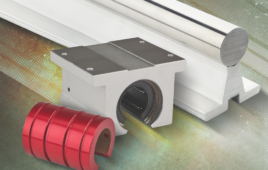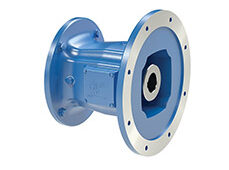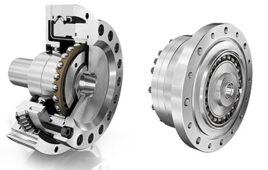Accessories for gearmotors are usually not the first thing most people look to when selecting a motor for an application. That’s because more important parameters like output torque, horsepower, and speed ratings usually (and rightfully so) take precedence.
But inevitably, accessories will come up at some point during gearmotor installation, and that’s when some tiny seemingly trivial detail can become central to whether or not a gearmotor works or doesn’t in a given setup.
To avoid this fate, here’s a look at three of the most common types of accessories for gearmotors and what they mean.

Gearmotor manufacturers typically offer a host of accessories. For example, accessories offered by Baldor can include shaft kits for hollow bore right angle gearheads, face adapters for parallel shaft gearheads, and mounting bases. (Image via Baldor)
Shaft kits: A shaft kit can contain a number of devices to achieve various aims. For example, shaft kits can sometimes contain seals for sealing the shaft from outside contaminants, depending on what type of environment it is used in. So for instance, seals may protect the gearmotor from fluids like oil or water, or particulate pollution like dust or other fine particles.
Another common accessory is an adapter sleeve. This is used to increase the shaft diameter, if that’s what’s needed for a particular application and fit. A common alteration may have an adapter sleeve turn a 1/2-in. shaft into a 5/8-in. shaft.
Another common accessory is a shaft grounding kit. NEMA recommends shaft grounding as a way to protect motor bearings for electric motors that run on inverter power.
Face adapter: Face plates refer to fixed mechanical mounting standards for motors used in America. The most common type of mount is the C-face. The mounting holes in C-face mounts are threaded and can accept bolts. Usually these are used to attach something like a gear reducer to the motor. Contrast this with a D-face mounting plate, which does not have threaded holes.
Mounting bases: Gearmotor mounting bases are typically correlated to motor frame sizes, where different mounting bases are available for different motor frame sizes. The variety here is fairly extensive and there are a number of different possibilities depending on a number of factors such as how and where the motor must be mounted.
Filed Under: Bearings





Tell Us What You Think!